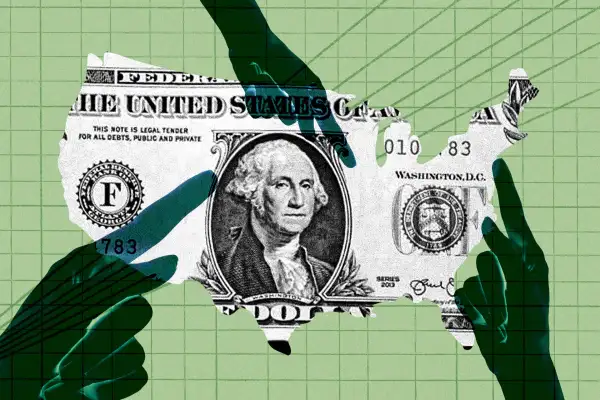The Minimum Wage Just Increased in These 21 States

Minimum wage workers in 21 states are getting a raise to start the new year thanks to ballot measures, legislation and inflation adjustments.
In some states, the minimum wage increases are modest, according to a December report from the Economic Policy Institute. For example, Alaska's minimum wage rose by just 18 cents. But in five states — Delaware, Illinois, Missouri, Nebraska and Rhode Island — the hike is $1 or more.
The left-leaning think tank argues that the minimum wage is a "powerful tool for combating racial and gender wage disparities," pointing out that "Black and Hispanic workers will disproportionately benefit" from the 2025 increases. Hispanic workers represent 19.5% of the workforce in the 21 states where minimum wages are going up but make up 38.8% of the population getting higher wages. Meanwhile, 58.8% of the workers getting a bump are women.
The minimum wage increases, which took effect Wednesday, benefit more than 9.2 million people, according to the report. But it's important to note that this math assumes that employers maintain their payrolls with the higher wage requirements in place. (Critics of higher minimum wages argue that these laws burden businesses and can force tough decisions about raising prices or reducing staffing.)
While the federal minimum wage has been unchanged for 15 years at $7.25 per hour, most states have higher minimums. Following the latest changes, 19 states have minimum wages of $15 per hour or more.
States with minimum wage adjusted for inflation in 2025
As of Wednesday, 14 states have hiked their minimum wages due to inflation adjustments that kicked in automatically under state laws.
Inflation adjustments, which aim to help employees keep up with rising costs, typically aren't as sizable as minimum wage increases enacted by voters or lawmakers, but many workers stand to make hundreds of dollars more per year as a result of these changes. (The average full-time worker will get a $420 bump in annual pay in these states.)
Here are the states with higher minimum wages following inflation adjustments:
- Alaska: $11.73 per hour to $11.91 (+18 cents)
- Arizona: $14.35 to $14.70 (+35 cents)
- California: $16 to $16.50 (+50 cents)
- Colorado: $14.42 to $14.81 (+39 cents)
- Connecticut: $15.69 to $16.35 (+66 cents)
- Maine: $14.15 to $14.65 (+50 cents)
- Minnesota: $10.85 to $11.13 (+28 cents)
- Montana: $10.30 to $10.55 (+25 cents)
- New Jersey: $15.13 to $15.49 (+36 cents)
- Ohio: $10.45 to $10.70 (+25 cents)
- South Dakota: $11.20 to $11.50 (+30 cents)
- Vermont: $13.67 to $14.01 (+34 cents)
- Virginia: $12 to $12.41 (+41 cents)
- Washington: $16.28 to $16.66 (+38 cents)
States with minimum wage law changes in 2025
Workers in seven states are now covered by higher minimum wages resulting from ballot measures and legislation. Voters in Nebraska and Missouri previously passed ballot measures that lift their minimum wages in increments ultimately to $15 per hour in 2026, and lawmakers in five other states approved minimum wage hikes effective Jan. 1.
Here are the states with minimum wage law changes for 2025:
- Delaware: $13.25 to $15 (+$1.75)
- Illinois: $14 to $15 (+$1)
- Michigan: $10.33 to $10.56 (+23 cents)
- Missouri: $12.30 to $13.75 (+$1.45)
- Nebraska: $12 to $13.50 (+$1.50)
- New York: $15 to $15.50 (+50 cents)
- Rhode Island: $14 to $15 (+$1)
More from Money:
Will We Have a Recession in 2025? 6 Experts Weigh in
The IRS Is Sending Out $2.4 Billion in Unclaimed Stimulus Checks

